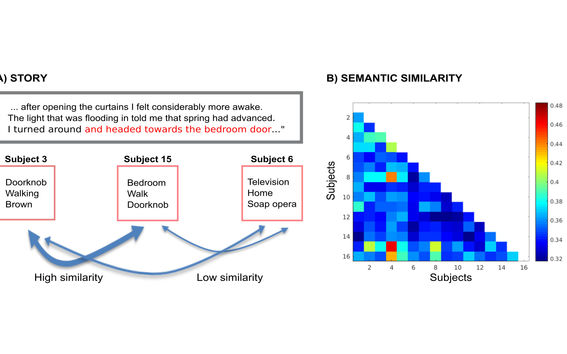Listeners immerse themselves in audiobooks in very different ways – and this shows in the brain

Researchers at Aalto University analysed how listeners immerse themselves in audiobooks by using functional magnetic resonance imaging (fMRI) and words that the story brings to mind. The study indicated that word lists resembling each other also predicted similarities in brain function.
In the study, 16 people listened to an audiobook written by Professor Iiro Jääskeläinen inside an fMRI device. After this, the same people listened to the story again in sections lasting between 3 and 5 seconds, and listed the words that came to their mind while they were listening.
For example, the following line in the story ‘went towards the bedroom door’ may, to some people, bring to mind a door handle, walking and a bedroom, while another person may recall a television, home and their favourite TV series. The visual images may also be different.
‘Instead of focusing on individual statements, the study examined immersion, or similarity in brain activity, in relation to the entire story’, Jääskeläinen says.
Word lists produced by the research subjects were assessed using a semantic tree and latent semantic analysis. In a semantic tree, dots represent concepts and arcs portray the relationships between concepts. For example, the words ‘dog’, ‘canine’ and ‘spaniel’ are close to each other in the tree, while ‘dog’ and ‘submarine’ are far apart. On the basis of this, estimations were made on how far the research subjects’ word lists were from each other.
Scientists discovered that similar words in the list predicted similarities in the test subjects’ brain activity, particularly in the area between the temporal and parietal lobe, which is important in language processing, and the visual cortex.
‘In the future, it will be interesting to see if this is caused by, for instance, cultural or personality differences’, Iiro Jääskeläinen says.
In meantime, the new method has various potential research applications: such as measuring creativity and its neural basis; or how people with different cultural backgrounds interpret the world in different ways.
Further information:
Iiro Jääskeläinen
Professor
Aalto University
[email protected]
Phone: 050 560 9503
Read more news

DeployAI Partners Gather for Heart Beat Meeting in Helsinki
The European DeployAI project's partners gathered for the Heart Beat meeting hosted by Aalto University Executive Education in Helsinki.
Get to know us: Associate Professor Maria Sammalkorpi
Sammalkorpi received her doctorate from Helsinki University of Technology 2004. After her defence, she has worked as a researcher at the Universities of Princeton, Yale and Aalto.
Aalto computer scientists in ICML 2024
Computer scientists in ICML 2024